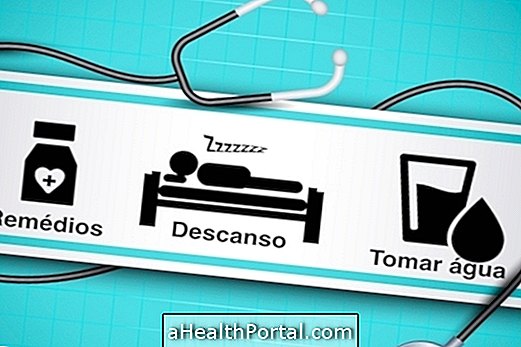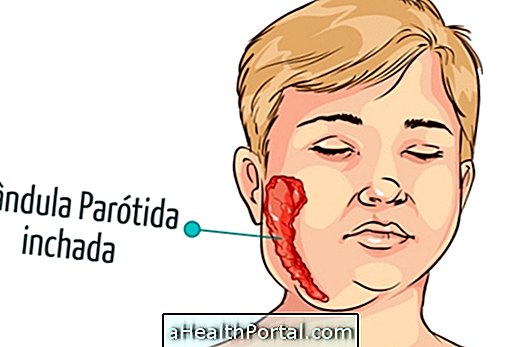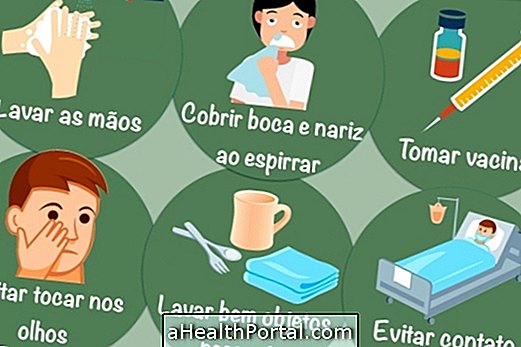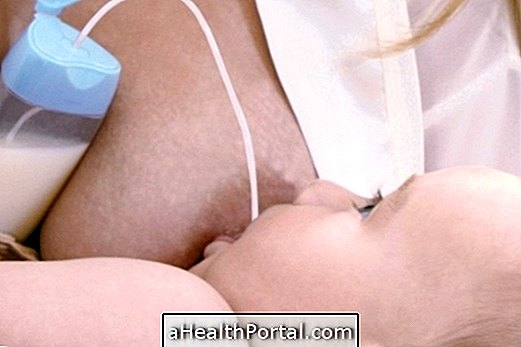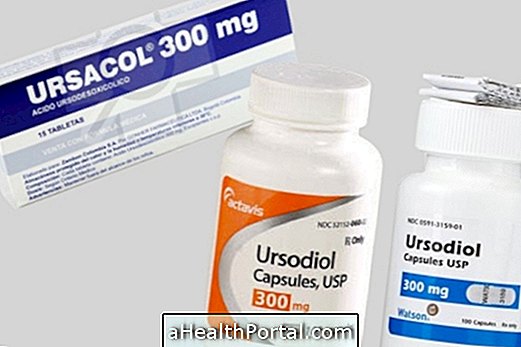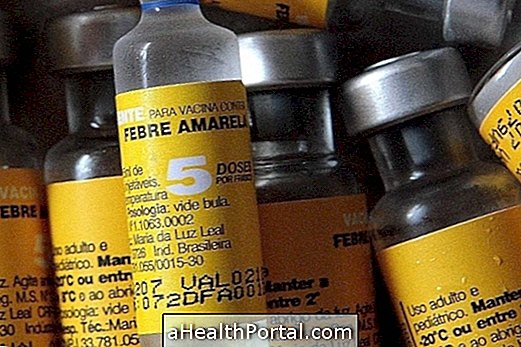Mononucleosis, also known as infectious mononucleosis or kissing disease, is an infection caused by the Epstein-Barr virus, transmitted through saliva, which causes symptoms such as high fever, pain and inflammation of the throat, whitish plaques in the throat and the neck.
This virus can cause infection at any age, but it is more common to cause symptoms only in adolescents and adults, and children usually do not have symptoms and therefore do not need treatment.
Although mononucleosis does not have a specific treatment, it has a cure and disappears after 1 or 2 weeks. The only recommended treatment includes rest, fluid intake and use of medication to relieve symptoms.
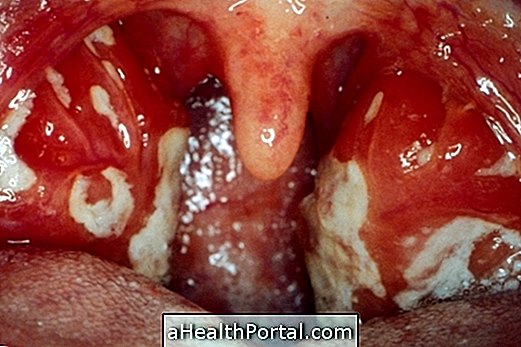
Main symptoms
Check which of the symptoms of mononucleosis you are feeling, to know your chances of being with the disease:
- 1. Fever above 38º C Yes No
- 2. Severe sore throat Yes No
- 3. Constant headache Yes No
- 4. Excessive tiredness and general malaise Yes No
- 5. Whitish plates in mouth and tongue
- 6. Languages in the neck Yes No

These symptoms can be easily confused with an influenza or cold, so if they last for more than 2 weeks it is advised to consult a general practitioner.
Tests to confirm mononucleosis
In some cases, mononucleosis can be diagnosed by the physician only by observing the symptoms and their duration. However, some tests may also be used to confirm, such as:
1. Abnormal lymphocytes in the hemogram
Mononucleosis infection causes the body to produce larger than normal white blood cells, known as abnormal lymphocytes, to kill the virus from the body. Thus, although this test fails to confirm the type of infection, when associated with symptoms it supports the possibility of being mononucleosis.
2. Examination for specific anti-bodies
This test allows the identification of specific antibodies in the blood for the virus that causes mononucleosis. Therefore, when these antibodies exist and are in high amounts it is a sign that they are infected. However, levels of this type of antibody can take up to 14 days to increase enough, and it may be necessary to repeat the test later.
How to get mononucleosis
Transmission of mononucleosis occurs through contact with the saliva of an infected person and therefore the most common form is through kissing. However, it is also possible to get mononucleosis through coughing and sneezing.
In addition, sharing glasses or cutlery with an infected person may also lead to the onset of the disease.
How is the treatment done?
There is no specific treatment for mononucleosis, since the body is able to eliminate the virus. However, it is recommended to rest and ingest many fluids such as water, teas or natural juices to speed up the recovery process and prevent complications such as inflammation of the liver or enlargement of the spleen.
In addition, the general practitioner may also indicate the use of some analgesic remedies, such as:
- Analgesics and antipyretics, such as Paracetamol or Dipirone: reduce fever, headaches and tiredness;
- Anti-inflammatories such as Ibuprofen or Diclofenac: relieve sore throat and reduce throat, for example.
In the case of other infections, such as tonsillitis, for example, the doctor may also indicate the use of antibiotics, such as Amoxicillin or Penicillin. However, antibiotics should not be used in other cases as they may cause an allergy to the skin.
Learn more about mononucleosis treatment.
Possible Complications
Complications of mononucleosis are more common in people who do not get the proper treatment or who have a weakened immune system, allowing the virus to develop more.
These complications usually include enlargement of the spleen and inflammation of the liver. In these cases, the onset of severe abdominal pain and swelling of the abdomen is common, and it is recommended that a general practitioner be consulted to initiate appropriate treatment.
In addition, rarer complications such as anemia, inflammation of the heart, or infections of the central nervous system, such as meningitis, may occur.
